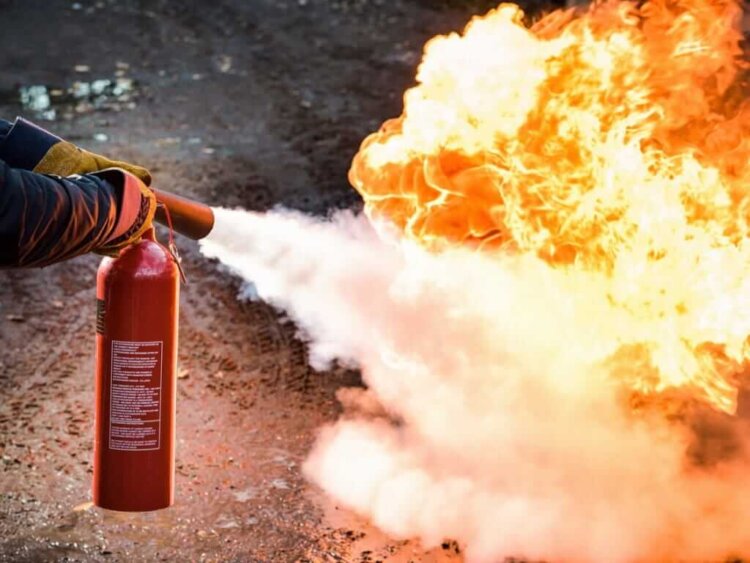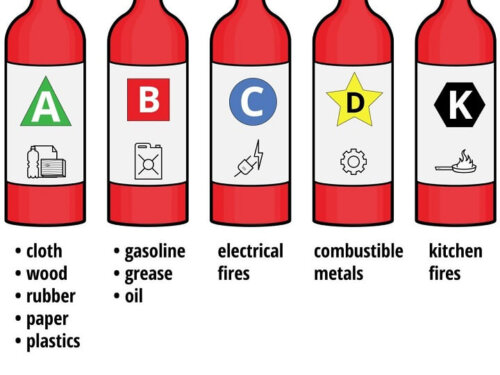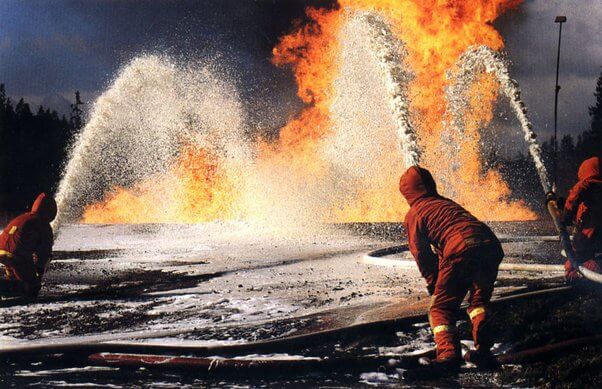Fire Extinguisher vs. Water: Which Is More Effective?
February 24, 2023
Fire extinguishers and water are both commonly used to put out fires. But which is more effective?
This blog post will compare the two and discuss which is better for different types of fires. Stay safe and stay informed!
What is a Fire Extinguisher

A fire extinguisher is a portable device that can be used to fight small fires. Having a fire extinguisher in your home or office is vital in case of an emergency.
What are the Different Types of Fire Extinguishers

There are many different types of fire extinguishers, each designed for a specific type of fire.
- Class A extinguishers are for ordinary combustibles such as wood, paper, and cloth.
- Class B extinguishers are for flammable liquids such as gasoline and oil.
- Class C extinguishers are for electrical fires.
- Class D extinguishers are for fires involving combustible metals.
- Class K extinguishers are for kitchen fires that involve oils or fats.
It is critical to identify which type of fire extinguisher to use—familiarize with the different types of extinguishers and their uses before a fire breaks out.
How to Properly Operate a Fire Extinguisher

There are three steps to properly operating a fire extinguisher: P.A.S.S. Pull, Aim, Squeeze, and Sweep. Here’s how it works:
- Pull the pin at the top of the fire extinguisher. This will break the tamper seal and allow you to discharge the extinguisher.
- Aim the nozzle of the extinguisher at the base of the fire.
- Squeeze the lever slowly and evenly until the extinguisher is fully discharged.
- Sweep the nozzle of the fire extinguisher from side to side until the fire is extinguished.
Remember, always P.A.S.S. when operating a fire extinguisher!
How to Use Water to Extinguish a Fire?
Water is one of the most effective things you can use to extinguish a fire. It can be used to cool down hot surfaces, smother burning materials, and reduce the oxygen available to the fire.
To use water to extinguish a fire, douse the flames with a steady stream of water from a hose or bucket. Be sure to aim the water at the base of the fire, not at the top of the flames. Water can also be used to cool down hot surfaces and prevent reignition.
Which Type of Fire Can You Use Water?

When it comes to fires, water is often the first thing that comes to mind to extinguish the flames. But does water really put out fires?
While water is not always the most effective fire extinguishing agent, it can be used to fight certain types of fires.
- Class A fires, which are fueled by materials like paper or wood, can be extinguished with water.
- Class B fires, which involve flammable liquids such as gasoline or oil, can also be put out with water.
- Class C fires involve electrical fires.
So, while water may not be the most effective fire extinguisher for every situation, it can be used to fight certain types of fires. In a pinch, it may just save your life.
When is It Not Effective?
Water is the most common type of extinguisher and can be used on Class A, B, and C fires. However, there are some types of fires where water is not adequate. Class D and K fires are two examples.
- Class D fires involve combustible metals like magnesium, titanium, or potassium. Water can actually make these types of fires worse by creating hydrogen gas.
- Class K fires are kitchen fires that involve cooking oils or fats. Water will cause these types of fires to spread because it is not dense enough to penetrate the oil and extinguish the flames.
What should you use on these types of fires? A dry chemical or CO2 fire extinguisher is the best option for Class D and K fires. Dry chemical extinguishers work by interrupting the chemical reaction taking place. CO2 extinguishers work by displacing the oxygen that is fueling the fire.
When to Use Water Bucket, Garden Hose or Fire Hose?
So, what’s the best way to fight a fire using water? The answer depends on the size of the fire. A bucket of water is suitable for small fires. A garden hose is good for medium-sized fires. A fire hose is ideal for big fires.
Pros and Cons of Using a Fire Extinguisher and Water to Fight a Fire
There are many factors to consider when deciding whether or not to use a fire extinguisher or water to fight a fire. Here are some pros and cons of each method:
Fire Extinguishers
- Can be effective at putting out small fires
- They are portable, so they can be easily moved to where they are needed
- Do not require a lot of training to use
Water
- Is readily available
- Can be effective at putting out large but specific types of fire
- Requires more training to use properly
So, which is the best method to use? It really depends on the situation. A fire extinguisher may be the best option if you have a small fire confined to a small area. Water may be the better choice if the fire is larger or spreading quickly.
When to Use a Fire Extinguisher and Water
Many factors decide whether to use a fire extinguisher or water to put out a fire. The most crucial factor is the type of fire you are dealing with.
If you have a handy fire extinguisher, the best course of action is to use it on small fires confined to a single object. Water is the best option if the fire is spreading or if you don’t have a fire extinguisher. Water can extinguish all three types of fires.
Another factor to consider is the size of the fire. If the fire is large, it’s best to leave it to the professionals. Don’t try to fight a large fire with a fire extinguisher or water.
Remember, safety is always the top priority. Use your best judgment to decide whether a fire extinguisher or water is the best option for the situation. If in doubt, always err on caution and call 911.
